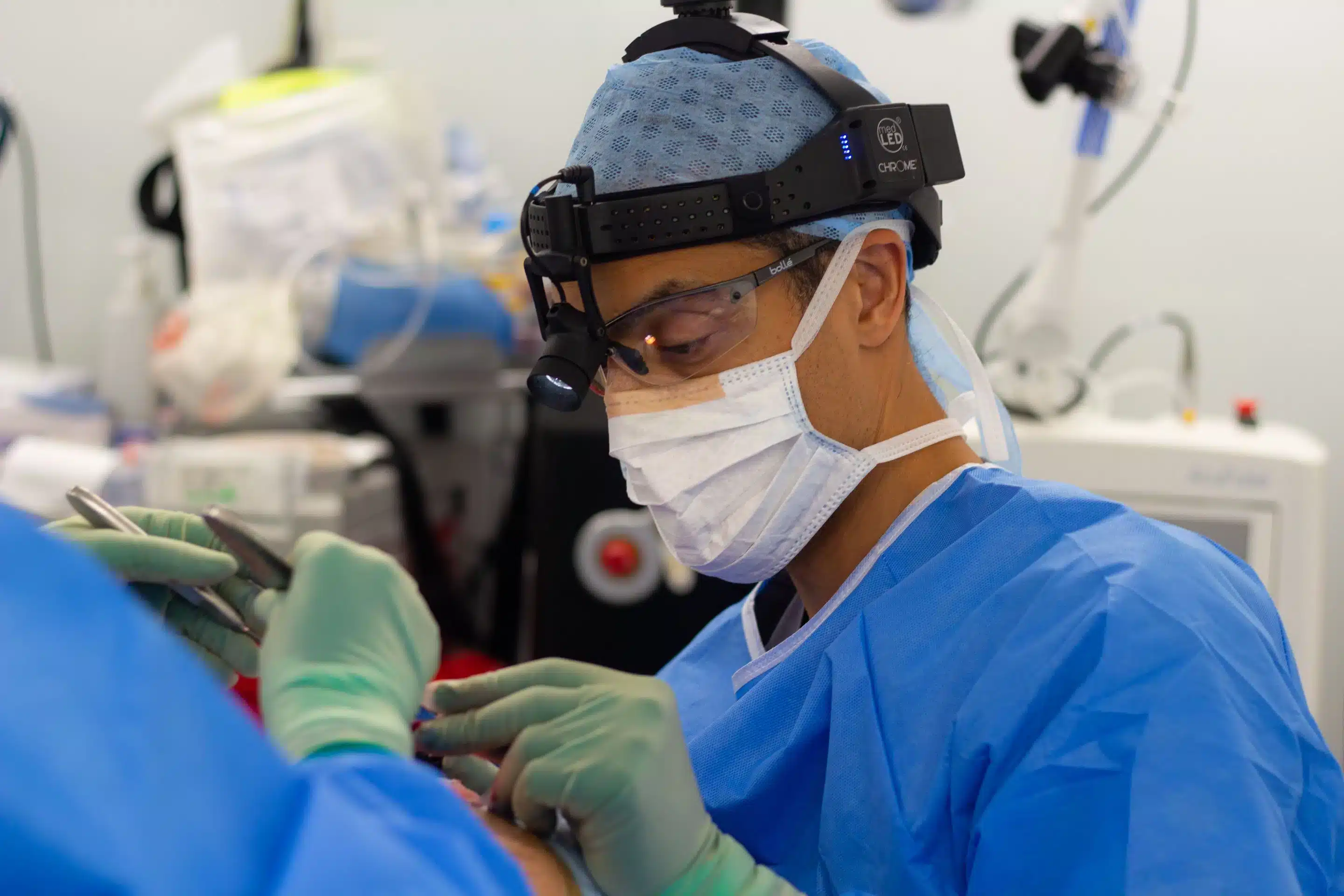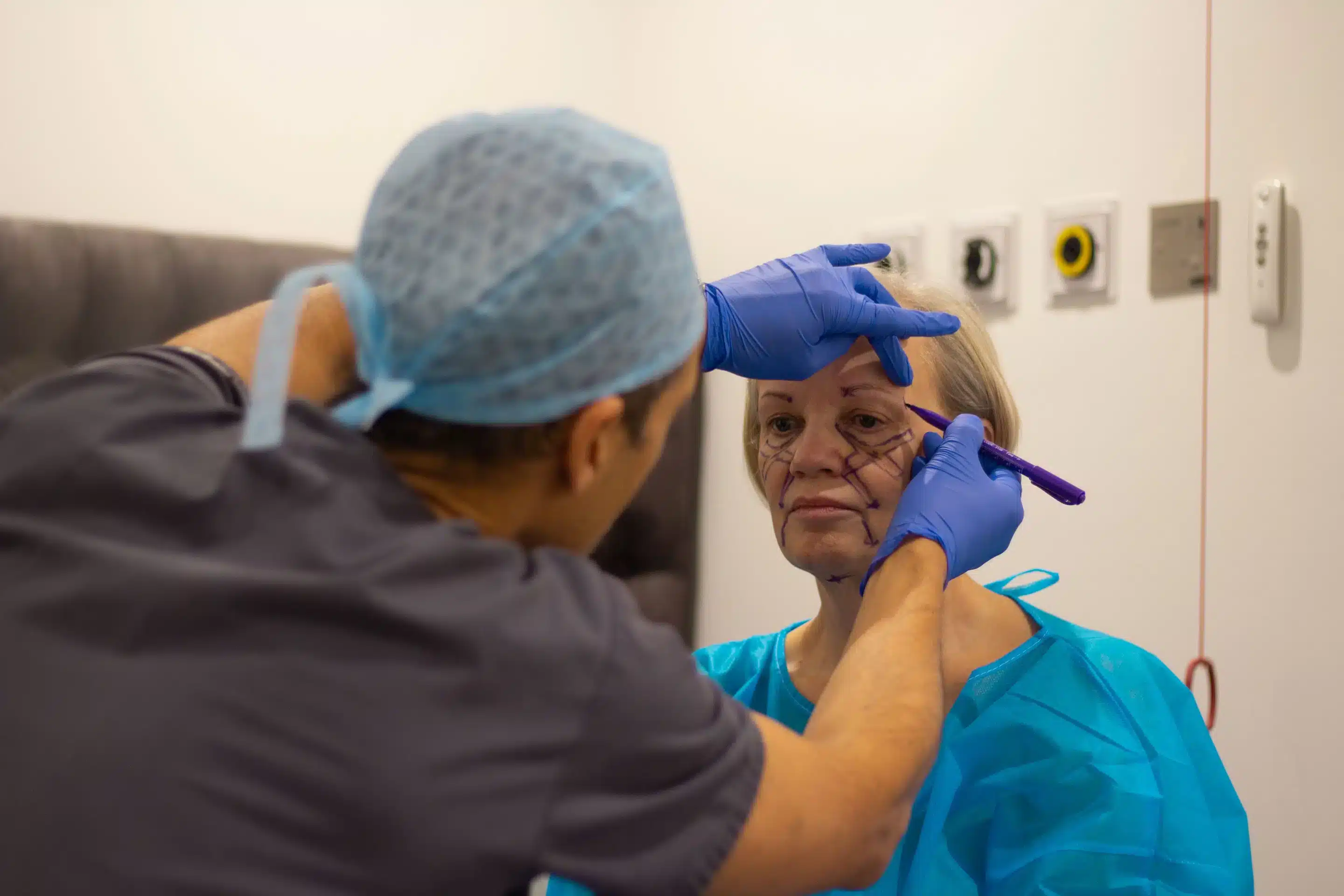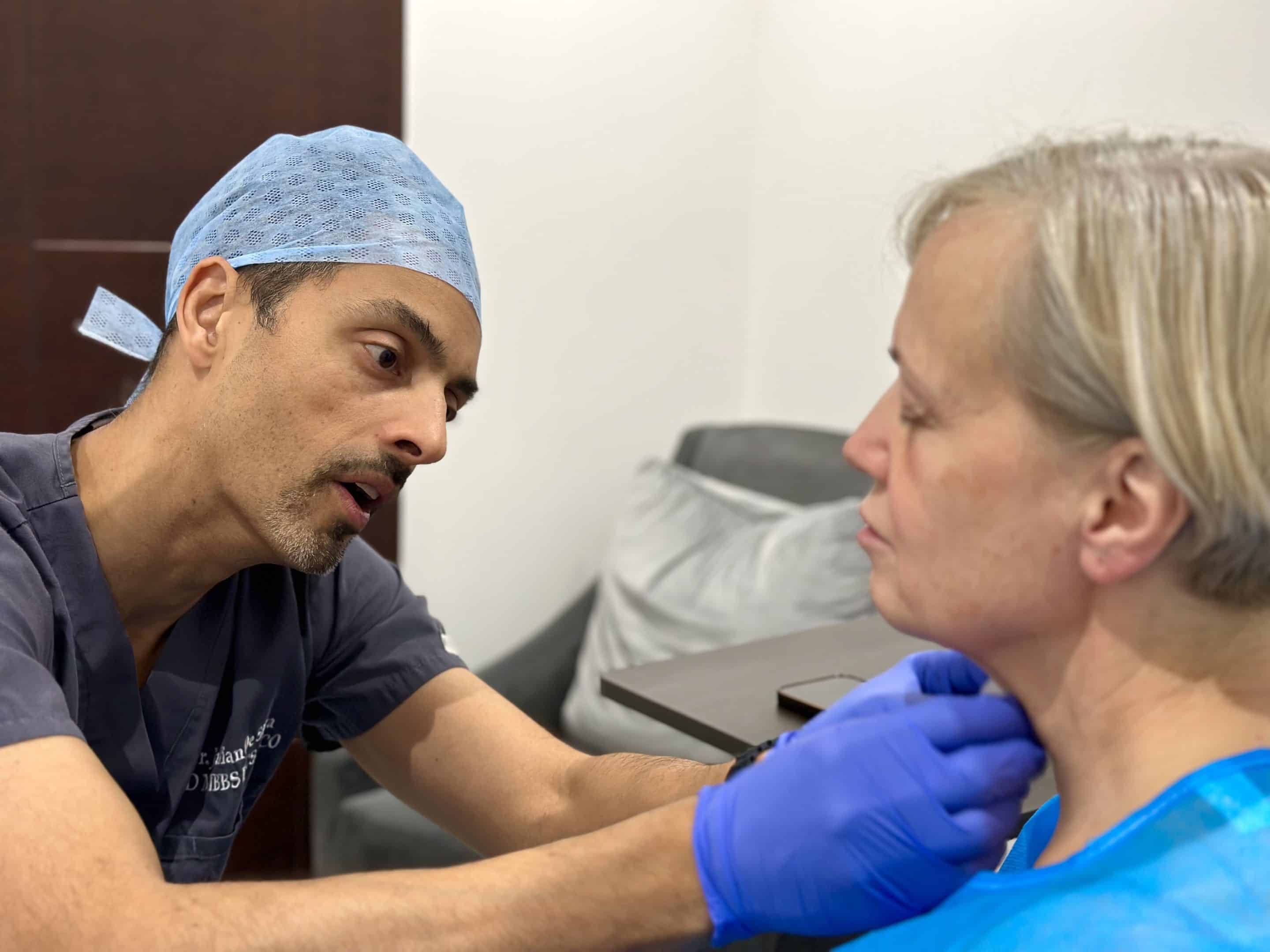
Small noses are considered attractive, especially if it fits the other facial features of a person. In this article, I will talk about small noses, why many people consider them to be attractive, and what treatment you can get.
What Does a Small Nose Mean?

People’s noses work the same, but their sizes can be different. Usually, men’s noses are about 2.2 inches. Meanwhile, women’s noses are around two inches long.
The difference is thought to be related to muscle mass, although nose size is also hugely affected by evolution and the environment.
It is critical to grasp the structure of the exterior nose. To begin, the “root” of the nose is located between the brows, while the “bridge” links the root to the entirety of the nasal anatomy.
The distance from the bridge to the nasal tip or apex, known technically as the dorsum nasi, is an important determinant of nose size. The nasal septum separates the cartilaginous alae (also known as nostrils) on either side of the tip. Finally, the philtrum attaches the nasal tip to the upper lip.
Variations from these dimensions result in a nose smaller compared to the rest of the face.
Why Are Small Noses Beautiful?

Society often thinks small noses look better, especially on women. This is because small noses seem delicate and feminine, fitting an old-fashioned idea of how women should look.
Another study in 2014 by Mikalsen and company pointed out that men’s and women’s noses naturally look different.
As a general rule, we associate slender and delicate noses with a feminine appearance. More prominent and angular noses, as well as larger bridges, are often associated with masculinity.
Are Small Noses Genetic?

According to studies, nasal shape and size can be genetically transferred from your parents’ genes. However, noses also evolve. In addition, the nose serves an important function in regulating the air we breathe. It also serves as a crucial distinguishing part of the face.
Appealing Nose Shapes

According to studies, the ideal female nasal shape looks like a button nose. This form of nose is raised at the tip and has a narrower nasal bridge. A button nose is a small, round nose that resembles the shape of a button. The noses’ concave features include a drop in the middle and a protruding tip.
Another attractive nose shape is the snub nose. The snub nose is found in roughly 4.7% of the examined population. The nose is tiny and slopes upward at the tip, exposing the nostrils. They are also typically smaller and turn up. The nose tip is neither spherical nor flat.
The Most Popular Cause of Nasal Obstruction

An anatomical malformation can induce a nasal obstruction, which restricts airflow into and out of the nose. If the flow of air into and out is impeded, this is referred to as nasal obstruction.
They are frequently temporary and are caused by the typical cold or allergies. For others, it may be a chronic symptom that has a substantial impact on their quality of life and necessitates medical care.
Acute nasal blockage is frequently caused by enlarged nasal tissues caused by a virus or allergies. A chronic obstruction, on the other hand, is caused by a restricted nasal cavity, which can be caused by a deviated septum, nasal polyps, enlarged adenoids, nasal tumours, or a congenital abnormality.
How to Make Your Nose Smaller

Surgical procedures like rhinoplasty can alter nasal size.
There’s a reason rhinoplasty, also known as a nose job, is one of the most popular cosmetic surgeries.In most situations, a relatively simple surgery lasting approximately an hour can permanently alter the nose’s form and size.
People want to change numerous aspects of their noses. Some people think it’s too huge overall, others aren’t thrilled with the form of the tip, and others are concerned about how broad it is.
There are also non-surgical options to make the nose smaller.
Your nose’s shape and size is mostly dictated by your bone and cartilage. Hence, it can’t be totally altered without surgery. Home treatments such as putting ginger powder, garlic extract, or apple cider vinegar won’t do either.
If you’re dissatisfied with the size of your nose, consider getting a nose job.
You can opt for a non-surgical nose job as well. However, this procedure includes a temporary filler, so you have to get treated again. Dermal fillers usually last for up to six months. In some cases, they can last for 12 to 18 months.
How to Decrease the Size of Your Nose

Reducing nasal size involves surgical and non-surgical procedures depending on your aesthetic goals.
Rhinoplasty, or a nose job, has grown in popularity in recent years. At my clinic, we choose the best nose job depending on your face and nose shape.
Depending on the level of correction required and your aesthetic goals, this surgery can be performed in the clinic under sedation anaesthesia or under general anaesthesia. The treatment usually takes 45 minutes, but more intricate rhinoplasty procedures may take up to two hours.
Rhinoplasty can correct a sagging nose, a boxer’s bridge (a rounder appearance), rough nasal tip, an overall nose size reduction, and other asymmetries. The surgery can also be used to remove any unattractive bumps and marrow down your nose.
Rhinoplasty Before & After Gallery

This woman wanted to alter the appearance of her nose while maintaining a natural finish.
Patient 1
This woman wanted to alter the appearance of her nose while maintaining a natural finish. She had a nose that was fairly long and had a prominent hump on the bridge.
In order to improve her look, I performed chin augmentation and rhinoplasty. Despite being only six weeks old, the photos demonstrate an improved nose with a lifted tip, shaped bridge and tip, and improved straightness. The patient was pleased with the results.

The big hump and broad nasal tip of this Asian man’s nose bothered him.
Patient 2
The big hump and broad nasal tip of this Asian man’s nose bothered him. His thick ethnic skin made his nasal tip difficult to define.
To enhance his look, I performed open rhinoplasty. I also used anti-swelling medication after surgery. A smaller, more refined nose that is more in line with his ethnicity is visible in the post-surgery photo.

This woman didn’t like the way her nose looked overall since it had a nasal hump and an undelineated nasal tip.
Patient 3
This woman didn’t like the way her nose looked overall since it had a nasal hump and an undelineated nasal tip. She went in search of a facial plastic surgeon who could assist her with this.
She wanted a conservative refinement rhinoplasty. Under twilight anaesthesia, I performed rhinoplasty and septoplasty. I refined and reshaped the cartilage in her nose, narrowed the bridge, and subtly lifted the tip with the help of specialized micro-burr and cartilage techniques.
The patient was delighted with the surgery’s natural-looking results.
What Is Surgical Nose Contouring?
Nose contouring reshapes and refines the nose’s profile. Cosmetic surgeons also use this method to reconstruct the nose and restore its function after physical trauma.
The upper portion of the nose’s structure is made of bone, while the lower portion is made of cartilage. Rhinoplasty surgery can affect and change bone, skin, cartilage, or all three. Consult your surgeon to find out if rhinoplasty is right for you and what it can accomplish.
When to See a Cosmetic Surgeon
If you’re thinking about cosmetic surgery to improve your appearance or fix an irregularity, you might be wondering when you should go to a surgeon.
Your surgeon will evaluate your facial proportions, physiology, the skin and tissues on your nose, and your overall aesthetic goals. If you are a good candidate for the procedure, your cosmetic surgeon will create a treatment plan tailored just for relevant results.
Please take note that the surgery involves risk, including dry mouth and swelling. You may also have painful experiences that can be treated with medicine. Other anti inflammatory ingredients might also help.
How to Make Your Nose Smaller

This section explains how to get a smaller nose through rhinoplasty.
While a non-surgical nose job helps you achieve the results you want, its results are temporary.
Rhinoplasty (aka make nose smaller surgery) offers permanent results. My patients enjoy the results of their nose jobs for many years. Some of them enjoy it for a lifetime.
Hence, the best way to make your nose smaller is through rhinoplasty. But how does rhinoplasty make your nose smaller? Here’s how to make your nose smaller:
1. Rhinoplasty adjusts your nasal bridge.
Your nasal bridge is the bony area of your nose.
Some patients have nasal bridges that are too big for their faces. If you have a big nasal bridge, your nose becomes disproportionate to the rest of your face. This also makes your nose look bigger than it actually is.
Rhinoplasty can adjust the nasal bridge. To do this, I first remove the bone and cartilage causing the irregularity. Then, I move the bone and cartilage closer to the nasal bridge. By doing this, the nose’s size decreases.
2. A nose job decreases the ala of the nose.
The ala of the nose (plural: alae), is the wing of the nose.
Wide alae make the nose bigger. Many patients come to me with concerns involving the wings of their noses. It gets worse when you have a narrow nasal bridge and extremely wide alae.
A nose job decreases the size of the nose’s wings. To do this, I first remove a portion of the nose’s wings. Then, I will adjust it to give you smaller nostrils. By doing this, the nose ends up looking smaller.
3. Rhinoplasty changes your nasal tip.
As its name implies, the nasal tip is the tip of your nose.
Some patients’ noses look huge because the nasal tip is longer than average. The drooping of the nasal tip also makes the nose bigger than it actually is.
Rhinoplasty can change your nasal tip. To do this, make a small cut on the columella. Then, I reshape the cartilage that supports the nasal tip. By doing this, the nasal tip becomes shorter. This results in the nose looking smaller.
Visit Julian De Silva – Rhinoplasty, London
Are you looking for a cosmetic doctor who will deliver natural results? Do you want great value for your money?
I, Dr. Julian De Silva, specialise in nose surgery. I take into account your preferences to deliver results that will match your bridge, tip, and nostril with the rest of your face.
Contact us to book a consultation now! As an alternative, you may visit us at 23 Harley St, London W1G 9QN, UK.





